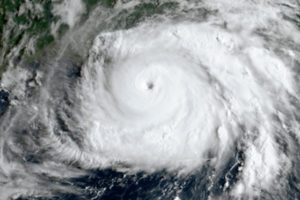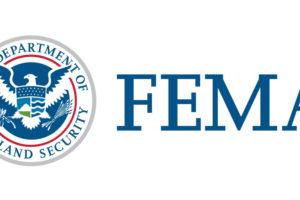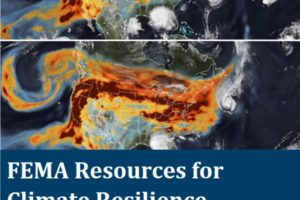
A week after Ida’s landfall in Louisiana, FEMA has given more than $165 million in grants to Louisiana survivors to help them begin their recovery. FEMA also received more than 13,500 National Flood Insurance Program claims from the affected states for processing.
People can help survivors and communities impacted by Hurricane Ida by donating to or volunteering with the voluntary or charitable organization of their choice, many of which are already in areas impacted by Ida and supporting survivors. Learn how to best help those in need.
Federal Actions to Support Areas Affected by Hurricane Ida
On Sept. 2, FEMA announced changes to its Individual Assistance program to better support disaster survivors by reducing the barriers to agency programs that aid underserved populations. Changes in this new policy include expanding acceptance of different forms of documentation to prove ownership or occupancy, while also expanding assistance for a disaster-caused disability.
There are eight FEMA Incident Management Assistance Teams deployed to support states affected by Hurricane Ida. Five are in Louisiana, New Jersey, New York and Pennsylvania. Seven AmeriCorps FEMA Corps teams are supporting Louisiana recovery efforts.
The National Emergency Management Association is helping facilitate additional resources to the Gulf Coast through the Emergency Management Assistance Compact. Resources from 14 states have been sent to assist with ongoing response and recovery efforts.
Commodities, equipment and personnel are working throughout the affected areas. This includes:
Disaster Survivor Assistance teams are on the ground in Louisiana providing in-person assistance in New Orleans and other parishes.
Urban Search and Rescue (US&R) teams have completed more than 39,000 structural evaluations in affected areas in Louisiana.
More than 278 ambulance crews and 30 air ambulances are deployed and working in Louisiana.
Additional ambulances and air ambulances are in Mississippi to support impacted areas.
Mobile Emergency Response Support assets, including emergency operations vehicles, are deployed to support communication needs in Louisiana and New Jersey.
The Defense Logistics Agency has been activated for fuel support and leasing of additional generators. High output generators are in Baton Rouge, La.
In Louisiana, The U.S. Army Corps of Engineers (USACE) has activated its Operation Blue Roof program for parishes approved for individual assistance. Residents can sign up for the program and complete a Right of Entry form at Blueroof.us. Residents can call toll free 1-888-ROOF-BLU (1-888-766-3258) for more information regarding this program.
USACE Temporary Emergency Power Planning and Response Teams, contractor support, and the 249th Engineer Battalion’s power generation team are mobilized in Mississippi and Louisiana to conduct power assessments and installations.
The U.S. Department of Energy authorized the Strategic Petroleum Reserve to conduct an exchange of 300,000 barrels of crude oil between fuel storage companies in Louisiana to alleviate any logistical issues of moving crude oil within areas affected by Hurricane Ida. This action will help ensure the region has access to fuel as quickly as possible as they continue their recovery.
The U.S. Department of Agriculture (USDA) approved Louisiana’s request to allow Supplemental Nutrition Assistance Program households to use their benefits to purchase prepared meals and are assisting with program flexibilities needed for mass feeding operations. USDA’s Disaster Household Distribution program was approved and will provide food packages to 800,000 survivors in 19 parishes.
The U.S. Department of Health and Human Services (HHS) deployed more than 180 medical providers and other staff from the National Disaster Medical System to support the triage and treatment of patients in Louisiana. This includes three teams that will be providing Emergency Department decompression to three hospitals in Thibodaux, Kenner and Raceland. The team in Thibodaux will begin to see patients today. A 250-bed healthcare facility federal medical station at the New Orleans Ernest Morial Convention Center began seeing patients this weekend. Patients must be referred to the station.
The station is staffed by Disaster Medical Assistance personnel and credentialed medical volunteers identified by the Louisiana Department of Health.
The Salvation Army mobilized feeding kitchens and emergency response vehicles in Albany, Baton Rouge, Hammond, Houma, and Thibodaux Gonzalez, Kenner, LaPlace, Napoleonville, New Orleans and Raceland, La. These operations can feed up to 60,000 people a day.
The American Red Cross, with the help of their partners, has provided more than 49,000 meals and snacks for survivors in the Gulf Coast. There are more than 20 Red Cross and community shelters open in affected areas in Louisiana. There are 13 shelters open in New Jersey and three in New York.
The U.S. Department of Transportation (USDOT) Federal Motor Carrier Safety Administration announced an Emergency Declaration that provides truck drivers flexibility to move critical freight to areas damaged by Ida.
Additionally, USDOT activated an Emergency Relief Docket for railroads so they can get temporary safety regulations waivers to help them speed up service to move goods necessary for emergency relief efforts.
The Federal Communications Commission is working directly with wireless carriers so that those in affected areas can roam on any available network while restoration efforts are underway.




